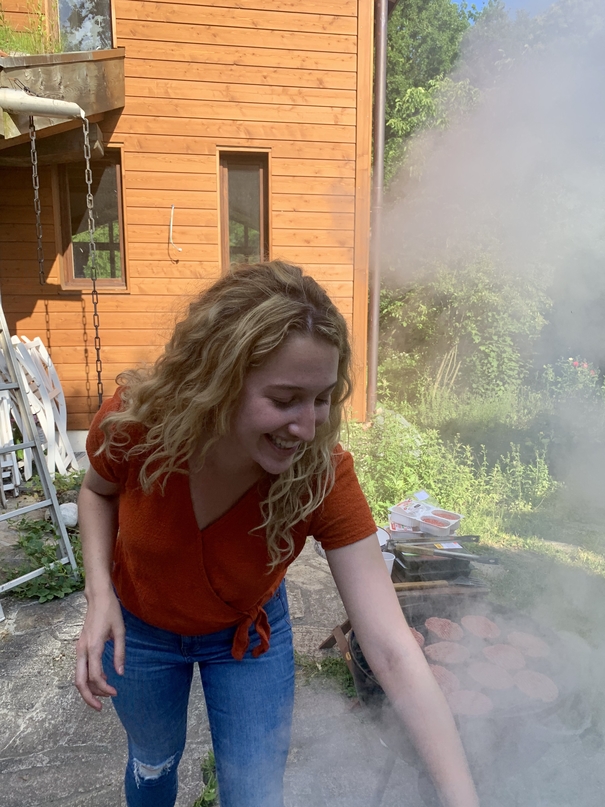Cooking up a code of ethics: Week 6
This week I helped lead our initial trial of the youth program we finished only the Friday prior. The fast-paced environment at IBJ could either be considered demanding or stimulating, depending on your view. I believe this summer has been a test run not only for the programs I’ve been able to assist in creating, but also a test run for my new work style post first year of law school. Prior to law school, I wanted my work product to be edited and perfected before I dare show even a co-worker. However, as reinforced by this week’s successes, I have learned this past school-year and summer that the opportunity for collaboration and constructive criticism on a project far outweigh working toward perfection alone.
We led two high school students through our program over the course of four days, which culminated in the student’s presenting a persuasive speech on behalf of their clients. The instructions for each step in the workshop were not perfectly ironed out. Yet, I considered the chance to notate where the students faltered versus excelled in our newly minted program beneficial to the editing process. I went straight to editing the program documents off my notes after each session with the students. I completely scrapped an exercise I thought would reinforce writing a professional email to make time for a new exercise on speech delivery. Being able to use my own work experiences as reference when talking with the two students was rewarding, but the ultimate goal is for student teams to not have a facilitator in the room. This is why I wrote a new exercise on informative versus persuasive speech giving, allowing future workshop teams to be more autonomous in creating their presentations.
I also began writing IBJ’s new Code of Ethics, aligning the new Code with the harassment policy I wrote. An interesting distinction I found in my research is whether an organization chooses to implement a Code of Conduct or a Code of Ethics. Originally, IBJ had a short paragraph covering employee conduct embedded within their also outdated Procurement Policy. This posed a risk that employees were not given any overview document addressing workplace conduct as a whole.
At first glance, I thought that a Code of Ethics and Code of Conduct would be interchangeable. Of course, like my law professors reiterated many times–language matters. Many organizations that used a Code of Conduct included a broad overview of their mission, and how they expected their employees to act in respect to that mission. However, more often than not, these drafted Code of Conduct did not seem to mention the other policies adopted by the organization. Nor did their Code reference reporting measures or sanctions for violations, even when the Code of Conduct did refer to other policy guidelines. The policies going unmentioned are the very policies their employees would need to be following in order to accomplish upholding the mission of the organization. This seemed like a gap with an easy fix, and I chose to adopt an integrative Code of Ethics for IBJ.
The integrated Code of Ethics references to other policies adopted by IBJ. Such references include their new equal employment and diversity policy I wrote. This allows IBJ employees to know the exact measures they must take in order for their conduct to comply with the Code and remain ethical to the mission of IBJ. Interestingly, I took out a reinforcement mechanism in the youth program, but I added in a reinforcement mechanism to IBJ’s policies and procedures.
This weekend was filled with laughs and red meat. IBJ’s CEO, Karen Tse, hosted all the interns and fellows at her house for an IBJ family barbecue. Who do you think did all the barbecuing? That’s right! The Texan took over, and I couldn’t help but show ‘em how it’s done.
